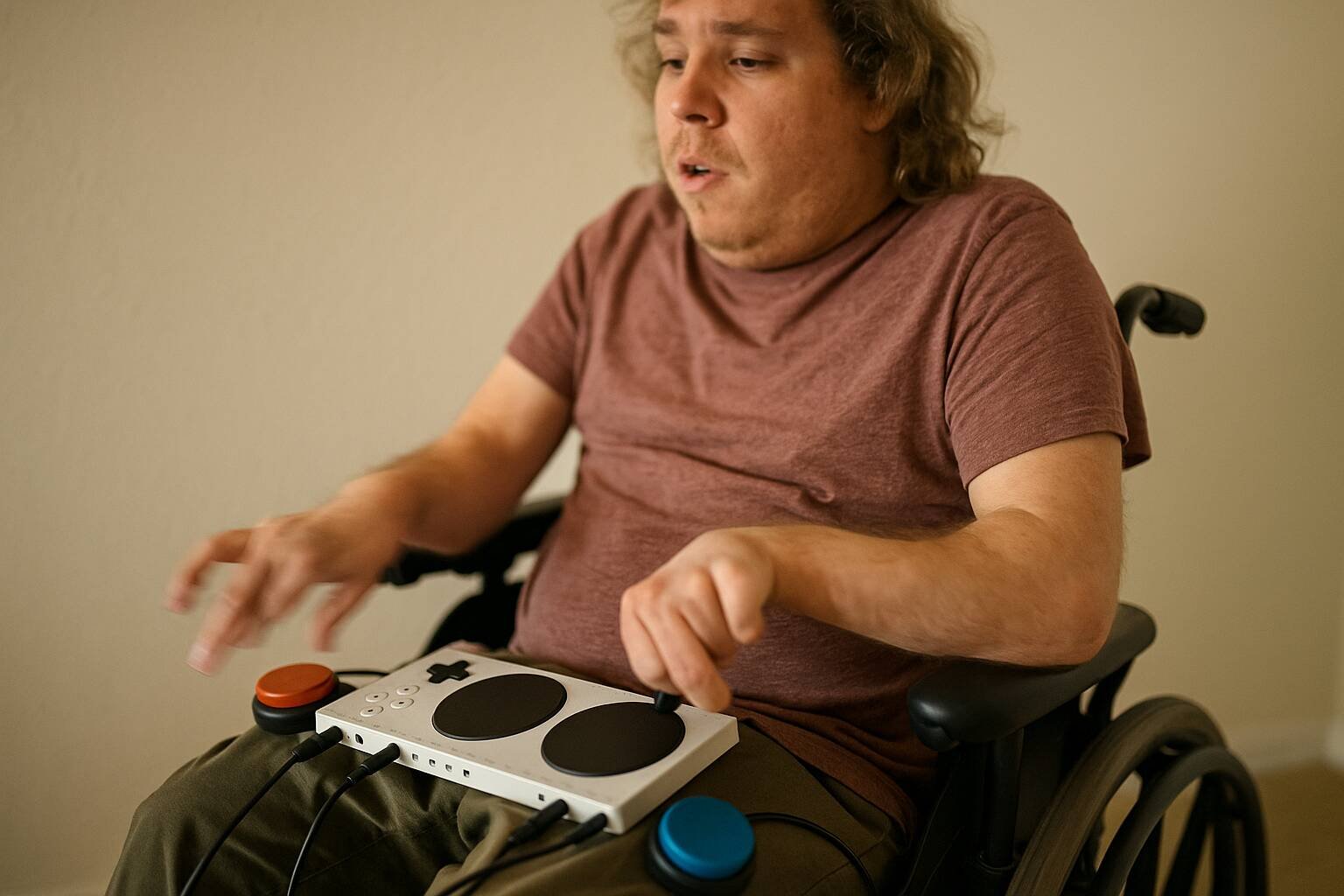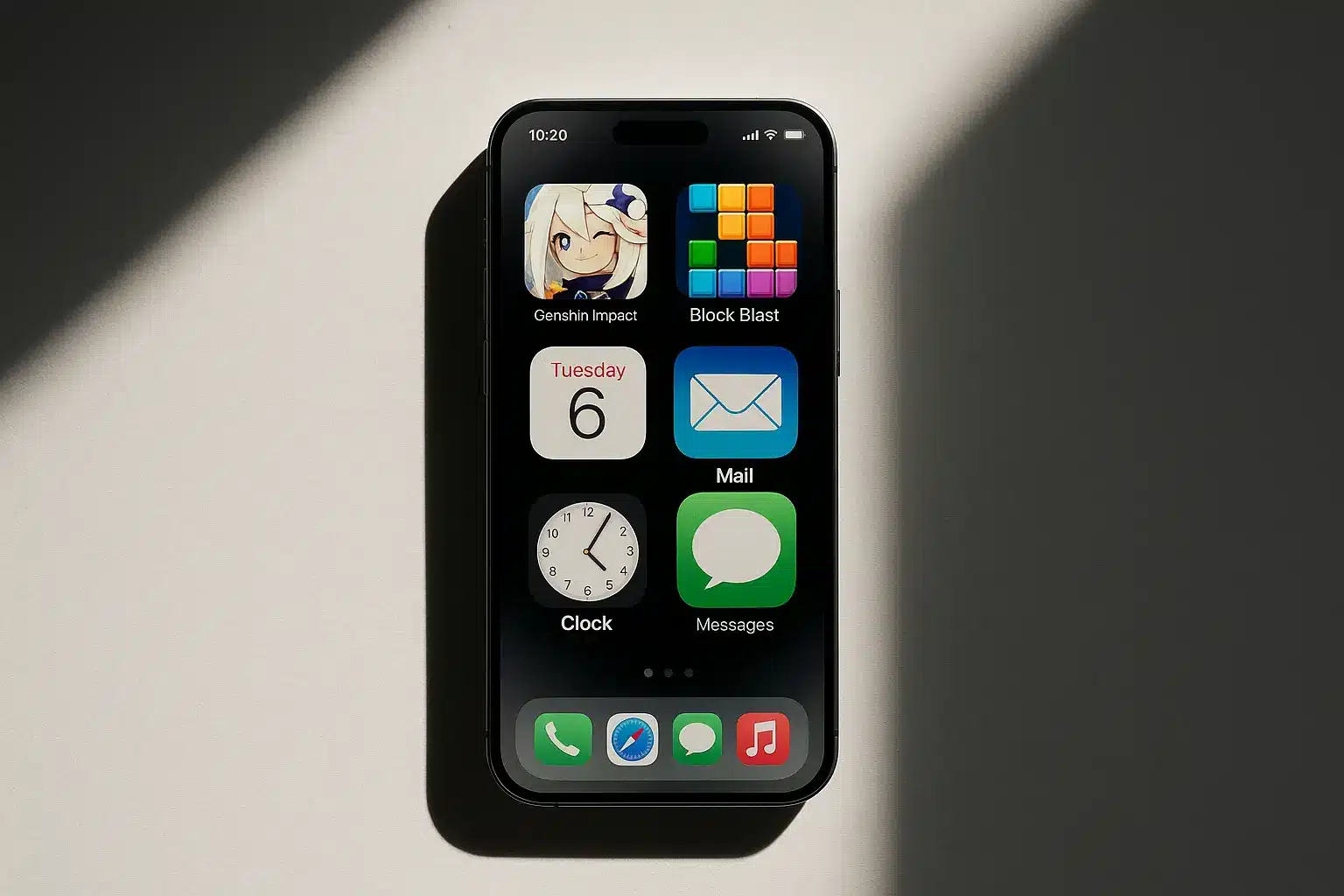

Gaming ska vara tillgängligt för alla – oavsett fysiska förutsättningar. För de cirka 16% av världens befolkning som lever med någon form av funktionsvariation är tillgänglighetsanpassade spelkontroller inte bara en trevlig funktion utan en nödvändighet. I denna guide utforskar vi de senaste innovationerna inom accessibility controllers 2025, från Xbox Adaptive Controller till PlayStation Access Controller och nya spännande alternativ.
Tillgänglighetsanpassade spelkontroller är specialdesignade enheter som gör det möjligt för personer med fysiska, kognitiva eller sensoriska funktionsvariationer att spela spel och använda datorer. Till skillnad från standardkontroller erbjuder dessa enheter flexibilitet genom modulära komponenter, justerbara inställningar och kompatibilitet med externa enheter.
Enligt färsk statistik från PixelPlex använder allt fler spelare med funktionsvariationer dessa specialanpassade kontroller för en mer inkluderande spelupplevelse. Huvudmålet? Att riva barriärer och göra digital underhållning tillgänglig för alla.
Marknaden för tillgänglighetsanpassade kontroller har expanderat avsevärt. Här är de ledande alternativen baserade på expertrecensioner och användarfeedback.
Microsofts Xbox Adaptive Controller (XAC) fortsätter att vara en revolutionerande lösning för tillgängligt spelande. Lanserad 2018 men kontinuerligt uppdaterad, fungerar den som en hubb för externa knappar, joystickar och andra tillbehör.
Huvudfunktioner:
Priset ligger på cirka 999 kr, vilket gör den till en relativt tillgänglig investering för många spelare med särskilda behov. Enligt The Gamer är det fortfarande en av de mest mångsidiga lösningarna på marknaden.
Sonys PlayStation Access Controller för PS5 representerar ett betydande framsteg i inkluderande speldesign. Lanserad sent 2023 och uppdaterad för 2025 erbjuder denna högst anpassningsbara kontroller en cirkulär design som stöder 360-graders orientering.
Nyckelfiktion:
Med ett pris på cirka 899 kr har denna kontroller fått utmärkt feedback från användare på sociala medier för sin höga anpassningsbarhet och intuitiva design, enligt TrendHunter.
Lanserad 2024 och optimerad för 2025, är Xbox Adaptive Joystick en enhandsavlösare med anpassningsbara styrspakar och programmerbara knappar. Den är särskilt utformad för användare med begränsad rörlighet i en hand och kostar cirka 699 kr.
Användare på X (tidigare Twitter) berömmer dess ergonomi och mångsidighet för ensidiga rörelsebegränsningar.
| Kontroller | Pris | Plattformar | Bäst för |
|---|---|---|---|
| Xbox Adaptive Controller | 999 kr | Xbox, PC | Användare som behöver externa enheter |
| PlayStation Access Controller | 899 kr | PS5 | Spelare med motoriska utmaningar |
| Xbox Adaptive Joystick | 699 kr | Xbox, PC | Begränsad rörlighet i en hand |
| Hori Flex (Nintendo) | 799 kr | Nintendo Switch | Switch-spelare med särskilda behov |
Det som verkligen särskiljer tillgänglighetsanpassade kontroller är deras omfattande anpassningsmöjligheter. Dessa enheter är utformade med förståelsen att upplevelser av funktionsvariationer varierar stort och kräver flexibla lösningar.
Viktiga anpassningsfunktioner inkluderar:
Enligt Filament Games har utvecklingen av AI-integrerad anpassning gjort stora framsteg under 2025, med kontroller som kan lära sig och anpassa sig till användarens specifika rörelsemönster över tid.
Konfigurera din tillgänglighetsanpassade kontroller optimalt med dessa steg:
Marknaden för tillgänglighetskontroller växer snabbt, driven av ökad medvetenhet om inkluderande design och expanderande konsumentefterfrågan. Enligt Gamification Summit förväntas marknaden fortsätta expandera med 15% årligen fram till 2030.
Trender som formar framtiden för denna teknik:
Tillgänglighetsanpassade kontroller sträcker sig långt bortom spelvärlden. I arbetsplatsmiljöer, utbildning och vardagsdatorer öppnar dessa teknologier nya möjligheter för personer med funktionsvariationer.
Användningsområden inkluderar:
Enligt Resolve Blog har investeringar i speltillgänglighet skapat positiva ringar på vattnet inom flera domäner, vilket förbättrar digital inkludering i olika aspekter av det dagliga livet.
Xbox Adaptive Controller är ofta rekommenderad för nybörjare på grund av dess mångsidighet, omfattande dokumentation och starka användargemenskap som delar tips och konfigurationer.
Ja, många tillgänglighetsanpassade kontroller som Xbox Adaptive Controller är fullt kompatibla med PC-spel och erbjuder omfattande anpassningsmöjligheter via Windows-inställningar.
Priserna varierar från cirka 699 kr för grundläggande modeller som Xbox Adaptive Joystick till 999 kr för mer avancerade lösningar som Xbox Adaptive Controller. Tillbehör som externa brytare kan köpas separat.
Absolut! Dessa kontroller kan användas för allmän datornavigering, utbildningsprogram, digital konst och till och med för att styra smarta hemenheter när de konfigureras korrekt.
Många moderna spel har förbättrat sitt tillgänglighetsstöd. Microsoft och Sony har båda börjat märka spel med tillgänglighetsfunktioner, och titlar som ”The Last of Us Part II”, ”Forza Horizon 5” och ”Ratchet & Clank: Rift Apart” har fått erkännande för omfattande tillgänglighetsfunktioner.
Genom att omfamna dessa teknologier och principerna bakom dem rör vi oss närmare en värld där digitala upplevelser verkligen är tillgängliga för alla, oavsett fysisk förmåga eller begränsning. Tillgänglighetsanpassade kontroller representerar inte bara en teknisk innovation utan ett viktigt steg mot ett mer inkluderande digitalt landskap.







 The Gaming Life – där spelet aldrig tar slut.
The Gaming Life – där spelet aldrig tar slut.